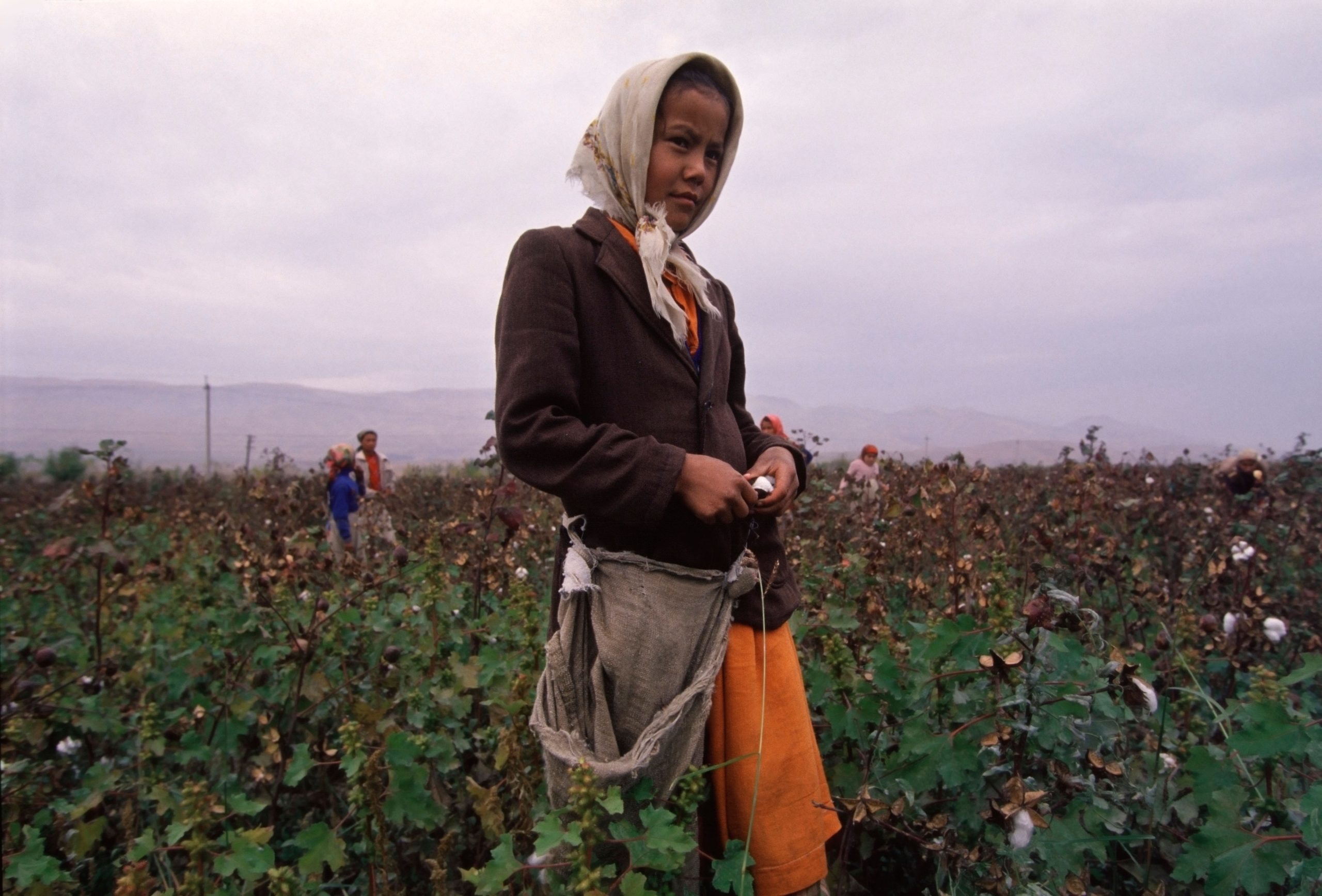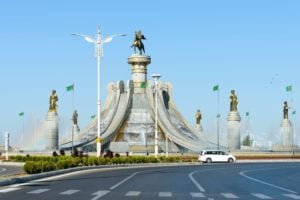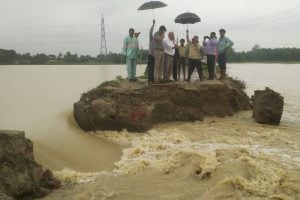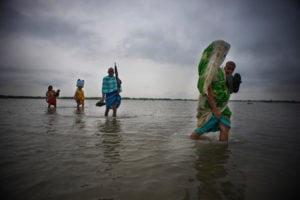Huge quantities of pesticides were used in the cotton and tobacco fields of Central Asian countries during the Soviet era. About 60% of these were highly toxic organochlorine pesticides (OCP), which are now banned or strictly regulated internationally. Today, they are a major source of pollution in the region.
In the decades up to 1990s, the USSR grew industrial crops across over 14 million hectares. These crops required multiple treatments with pesticides, including OCPs. In what are now Central Asian countries, cotton and tobacco crops were sprayed with pesticides by aircraft. This meant pesticides spread over large areas and often entered rivers and lakes.
Today, Central Asia contains some of the largest stockpiles of toxic and now banned pesticides in the world. They are buried in poorly managed and regulated sites across the region, resulting in widespread damage to the environment and human health.
The health effects
Our studies, carried out in Kyrgyzstan this year, have shown the presence of eight types of OCPs in human breast milk, including aldrin, heptachlor, hexachlorocyclohexane (HCH) and dichloro-diphenyl-trichloroethane (DDT). OCPs were found in 89% of the breast milk samples from nursing mothers who came to our laboratory with sick children. The mothers themselves had various illnesses.
Newborn children were found to have congenital malformations, liver disease, developmental problems, infections, sepsis, inflammatory acute intestinal infection and other conditions.
Our specialists found that mothers with OCPs in breast milk had moderate anaemia (up to 98%), dysbiosis, moderate toxicosis, eclampsia, gestational hypertension, kidney disease, thyroid disease, latent liver disease and constipation or stool disorder, discomfort, more complicated previous childbirth(s), lactation disorders, mastitis and mastopathy leading to development of breast cancer.
In the areas polluted by OCPs, the incidence of breast cancer among women with four to 10 children in 2012 was more than 50%. This was 2.5-3 times the incidence in unpolluted areas.
In Gulcho, a village in the mountainous Alai region of Kyrgyzstan, the area occupied by a pesticide storehouse was allocated to a private firm in 2007 and land previously contaminated by pesticides was distributed to private owners who started to grow vegetables and other crops. By 2009, the incidence of breast cancer among local women increased more than four times compared with 2007 rates. Water in a ditch flowing through the storehouse was found to have HCH at a concentration of 0.007 mg/litre, very close to the upper limit recommended by the World Health Organization (WHO).
This toxic legacy continues to cause illnesses throughout Central Asia. As doctors and researchers, all we can do is to monitor the situation, identify the most polluted places and recommend the use of preparations obtained from local medicinal herbs and fruits that can remove OCPs from the gastrointestinal tract.
Tajikistan
There were 167 pesticide storehouses and 140 agricultural airstrips used to disperse pesticides on Tajik farms until 1980, according to a 2007 paper by Abdusalim Djuraev, national coordinator for implementing the Stockholm Convention on persistent organic pollutants, the global treaty aiming to protect humans and the environment from dangerous chemicals. From 1973 to 1991, about 7,500 tonnes of various pesticides – including about 3,000 tonnes of the highly toxic and now banned DDT – were buried in sites in the cities of Vakhsh and Kanibadam.
Samples collected from the soil near the Vakhsh pesticide burial site contained dangerously high levels of a substance with the properties of persistent organic pollutants (POPs). According to the WHO, POPs are chemicals of global concern due to their potential for long-range transport, persistence in the environment, as well as their significant negative effects on human health and the environment. They are banned or regulated internationally.
The concentration of total pesticides ranged from 2,195 to 31,831 mg/kg. DDT and molecules of dangerously toxic HCH was also found in this toxic mix. (Lindane, a banned insecticide, is the most well-known HCH).
Uzbekistan
The situation is just as bad in other Central Asian countries. In 2009, Uzbekistan still had 1,500 tonnes of banned and obsolete pesticides, including 120 tonnes of OCPs, Sergei Naumov wrote in Fergana News. The country has 14 special underground storage facilities for pesticides, made of reinforced concrete. The largest and most unstable one is the Tuprakalli pesticide burial site in Khorezm province.
Pesticides were such big business in Uzbekistan that airfields for spray-planes covered 300 hectares. There were 27 such airfields in Khorezm province and 51 in Karakalpak province. The soil contamination level of these airfields were over 100 times the Soviet set limits.
In 2002, the State Committee for Nature Protection confirmed that DDT and other pesticides were intensively used in the country. Even 15 years after the official ban on DDT, in areas where there had been intensive cotton cultivation its concentration in the soil exceeded the maximum permissible limits. In the Fergana region, the concentration exceeded permissible limits by more than eight times. The WHO limit for DDT in drinking water is 2 µg/litre.
Kazakhstan
Around 500 tonnes of unidentified pesticides are stored in Kazakhstan, according to official reports. A preliminary inventory by local NGO Eco-Soglasie in 2004 found 15 tonnes of toxaphene, 24 tonnes of HCH and 0.5 tonnes of DDT in storehouses. Toxaphene was stored in the Akkainsky district of northern Kazakhstan, HCH at the plague control station in the Atyrau region and DDT near the village of Zhangiz-Tyube of Zharma district in eastern Kazakhstan. Toxaphene is a banned pesticide now, because it damages the central nervous system, thyroid, liver and kidneys in people.
Regional environmental protection departments estimated that all these toxic chemicals were lying in dilapidated storage facilities. They also estimated that the country would need to dispose of 1,200 tonnes of pesticides, including POPs.
Turkmenistan
DDT was found in all agricultural regions of Turkmenistan, with 109 tonnes stored in four waste disposal areas – in Akhal (Eneev), Mari (Karabota), Lebap (Zerger) and Dashoguzm (Takhta) regions.
After the fall of the Soviet Union, almost all agricultural airstrips and storehouses in Turkmenistan were destroyed. The land was allocated to the private sector, houses and mosques were built on them, fruits were planted, vegetables, grain and legumes were cultivated.
To top it all, pesticide burial sites were excavated and the pesticides were taken out for use on new crops.
Kyrgyzstan
Apart from spraying OCPs on cotton and tobacco fields, more than 1.5 million hectares in northern Kyrgyzstan and 300,000 hectares in the southern parts of the country were sprayed with DDT to control marmot populations during the 1970s and 80s, according to a major 2018 study on pesticide pollution. The toxic legacy remains.
There were over 45 agricultural airstrips and 183 pesticide storehouses in the country. The pesticides are now buried in two sites. Suzak district of Jalal-Abad region has 1.8 million tonnes including over 1 million tonnes of OCP. This also includes 70 tonnes of the highly toxic insecticide aldrin, which is as damaging as DDT.
Pesticides are being washed into rivers from all these burial sites. From the Tash-Baka burial site, the toxic chemicals get into the Kok-Art river; from the Ak-Chabyr burial sites, into the Kyzyl-Unkur river. Both flow into the Kara-Darya river and then into Syr-Darya, one of the major transboundary rivers of Central Asia.
In northern Kyrgyzstan, there are 98 pesticide storehouses in the Chuy Valley and 52 in the Issyk-Kul zone. In the Kurgak-Ukok area, 764 tonnes of pesticides were buried in 1990.









